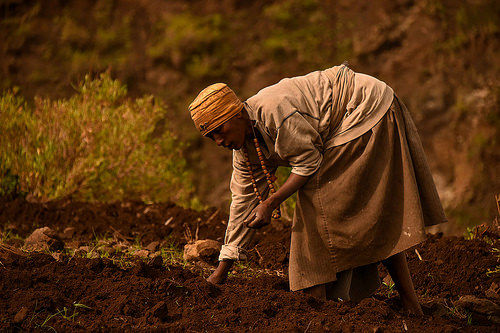Can Kenyan farmers combat food insecurity with climate-smart agriculture?
It is midday at Kiliku village in Machakos County, about 90 kilometres east of the Kenyan capital of Nairobi, and Nicholas Mutiso is sitting on a rock with a pen and a notebook, listening keenly to the words of local agricultural extension officer, Robert Kioko.
Thirty-year-old Mutiso is a farmer and one of over 300 men and women attending a series of trainings organised by the Machakos County local government in partnership with Greenpeace Africa and the Institute for Culture and Ecology (ICE), a Kenyan NGO focused on environmental and resource management.
Participants are being taught about climate-smart agriculture (CSA), farming methods that will enable them to make the most of their own land by helping to ensure food security and economic empowerment from the sale of surplus crops such as sorghum, millet, green grams (mung beans), cassava and cow peas.
“Apart from the good farming practices we are taught, we are also encouraged to plant trees in order to reclaim our area as we are sitting on the foot of Ol Donyo Sabuk (Kilimambogo) mountain which was once a forest full of wild animals. But since it was cleared for charcoal, now we have limited rain,” Mutiso explains.

photo credit: Rod Waddington



